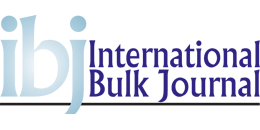


(Posted on 03/12/18)
Primary Industries and Regions SA (PIRSA)'s Crop and Pasture Report for Spring Crop Performance haws outlined the health of crops and pastures across the state of South Australia is quite varied with several districts in the state experiencing drought.
Despite the below average harvest, the farmgate value of the state's crop is estimated to hold up at $1.7 billion on the back of higher grain and fodder prices this season. The 4.9 million tonne estimate grown from 3.5 million hectares is well below the long-term South Australian average of 7.9 million tonnes.
Minister for Primary Industries and Regional Development Tim Whetstone said rainfall this growing season was below average across most of the state, with significant areas drought affected. "This year we're experiencing quite a patchy situation – some areas are experiencing very good seasons while others are experiencing very difficult seasons," said Minister Whetstone.
"A number of areas in the state are drought affected, including eastern and western Eyre Peninsula, upper North, northern Yorke Peninsula, Murray Mallee, eastern Mid North and North East pastoral. Most districts received very much below average rainfall in September. Several strong winds and some widespread frosts occurred in late September and early October.
"The widespread frosts damaged grain crops at their most vulnerable flowering to early grain fill stage. Around 10 per cent of the state's grain crop was cut for hay as a result of the frost damage. We are working with industry, support agencies, communities and other government authorities to manage the state's drought affected areas and importantly ensure our farmers know there is support available.
"The State Government has established our Family and Business Support Program with mentors available to support the health and wellbeing of drought-affected communities. Some farmers on Eastern Eyre Peninsula, Upper North, Mid North and Southern Mallee will not have enough grain to provide seed for next season's crops, but anecdotally are expected to have enough seed in storage or be able to source seed from elsewhere to meet requirements.
"There is some pasture feed on Kangaroo Island, the South East and areas of the Eyre Peninsula, but in other areas pasture feed and soil surface cover is low. Most cattle and sheep producers in pastoral areas have continued to reduce livestock numbers, with some totally destocking and most having reduced numbers by 40 to 80 per cent."
This year's current crop production estimate is very similar to that of 1999–2000, 2007–08 and 2008–09 seasons, which all were around 4.8 to 4.9 million tonnes.
The Government has convened the Dry Conditions Working Group with the state's major food and livestock industry organisations being members of that group. Working with government, the group is in place to plan support and assistance measures for farmers and communities.
The National Grain and Feed Association (NGFA) has applauded Senator Deb. Fischer’s (R-Neb.) reintroduction... Read more
Anglo American plc and Teck Resources Limited have received regulatory approval from the Government... Read more
The Rhodes Ridge Joint Venture has approved a $191 million (A$294 million) (Rio Tinto share $96 million... Read more
Trafigura Group Pte Ltd, a global leader in the commodities industry, has announced its financial results... Read more
Rio Tinto has successfully produced the first copper from the Johnson Camp mine in Arizona using its... Read more
The American Soybean Association’s World Initiative for Soy in Human Health programme and the... Read more
Karlka Nyiyaparli Aboriginal Corporation (KNAC) Registered Native Title Body Corporate and Rio Tinto... Read more
OCI Global, a leading global producer and distributor of nitrogen products has announced that it has... Read more
In December 2024, SSAB was granted a permit by the Land and Environment Court at Umeå District... Read more
The President of the Republic of Guinea has joined project partners WCS1, Baowu, Chinalco and Rio Tinto... Read more